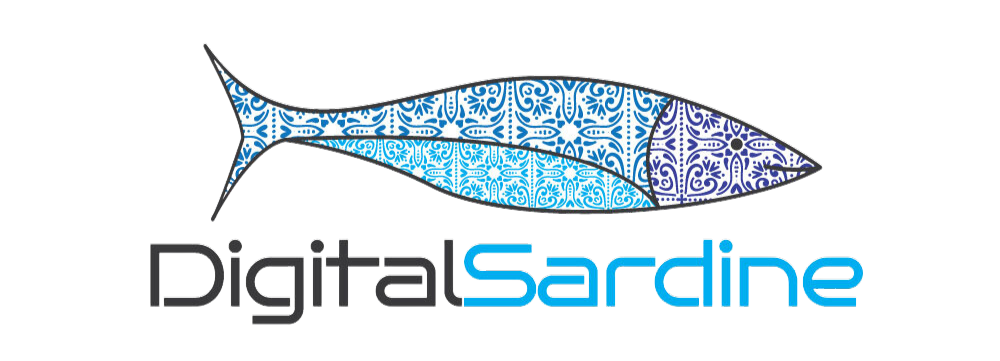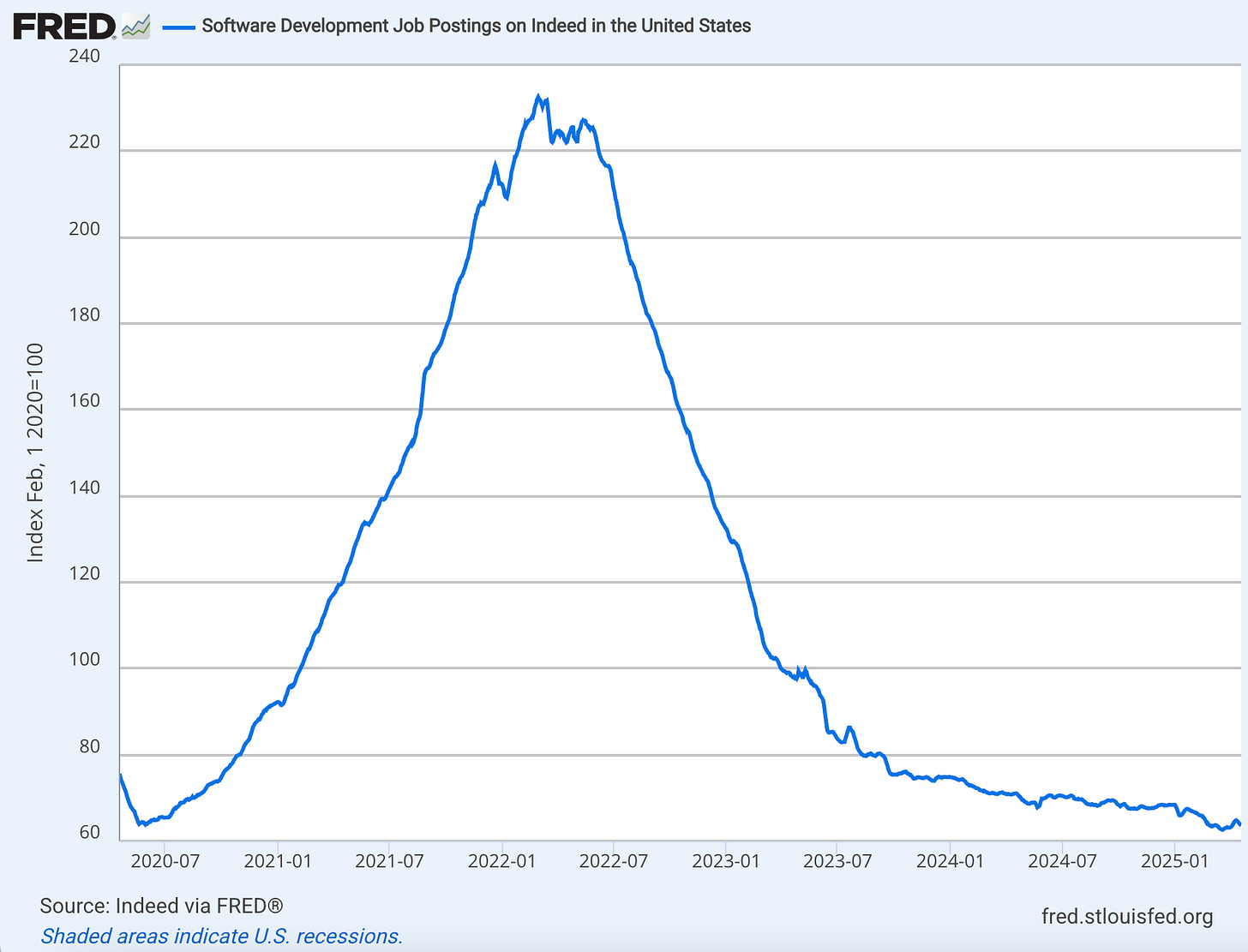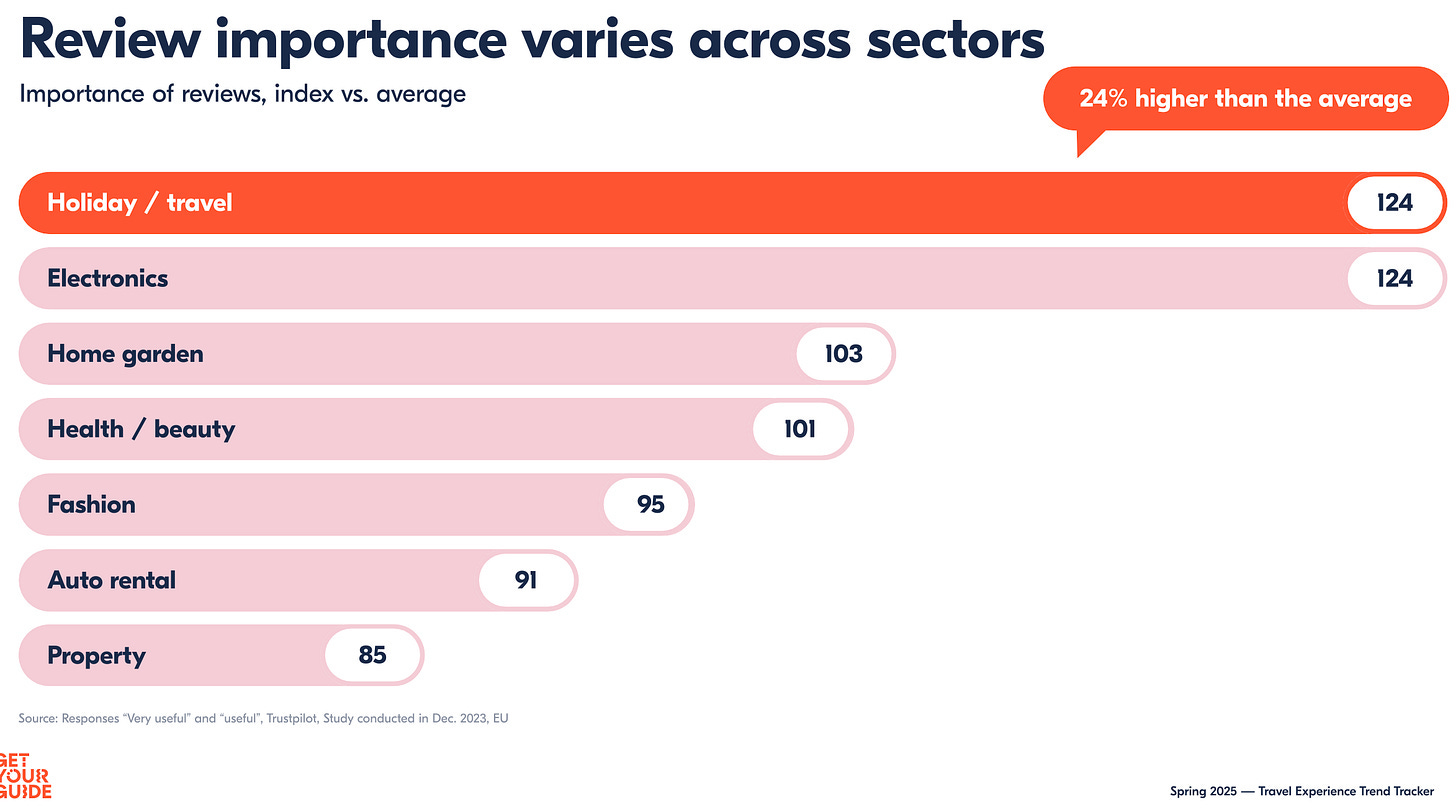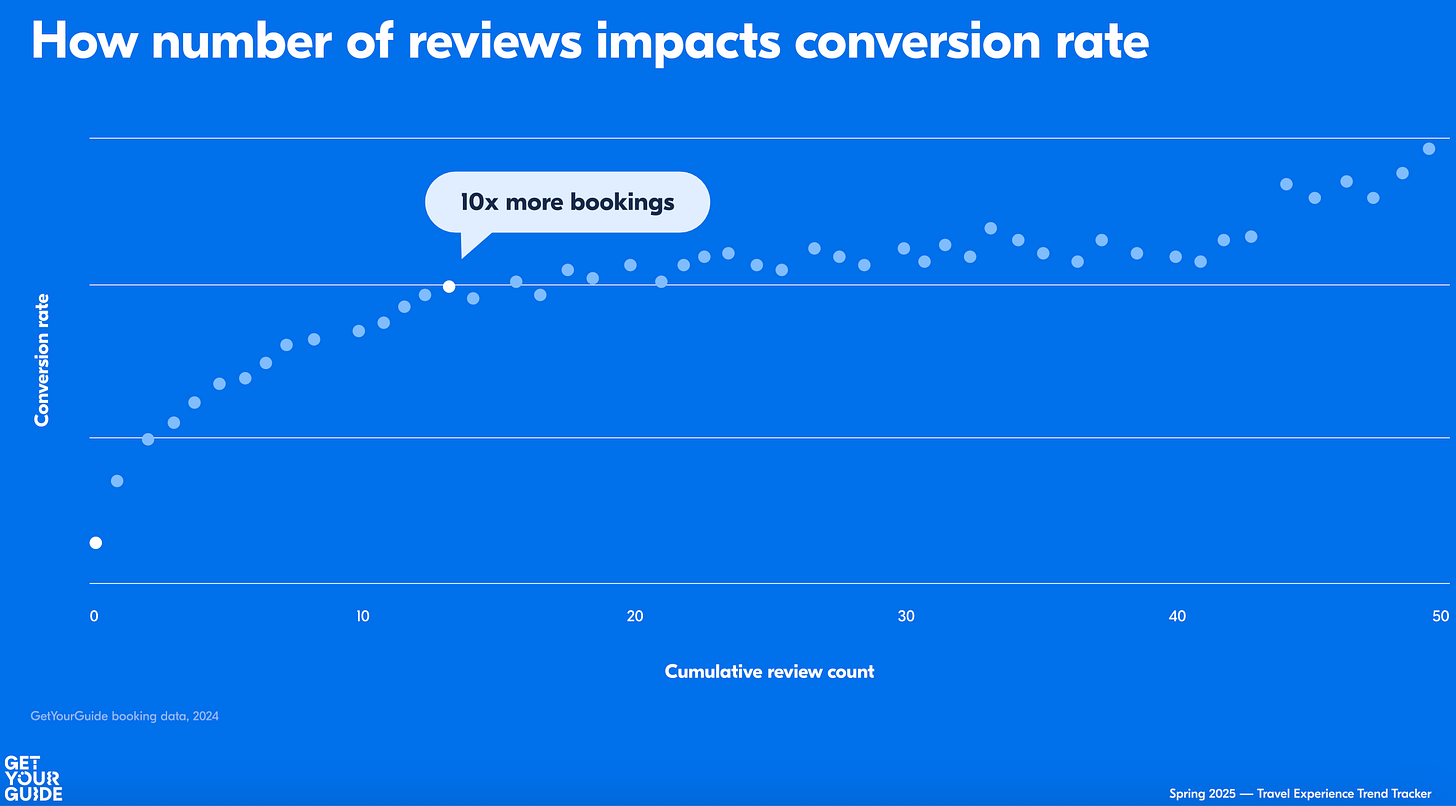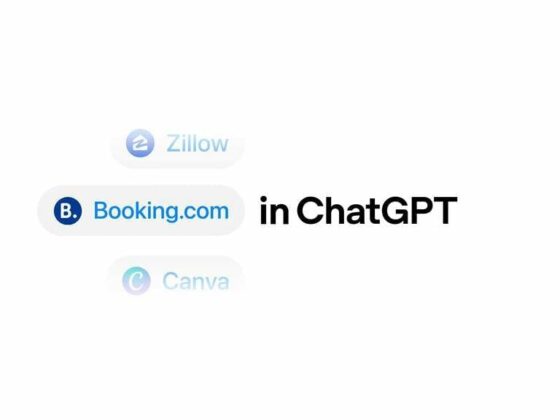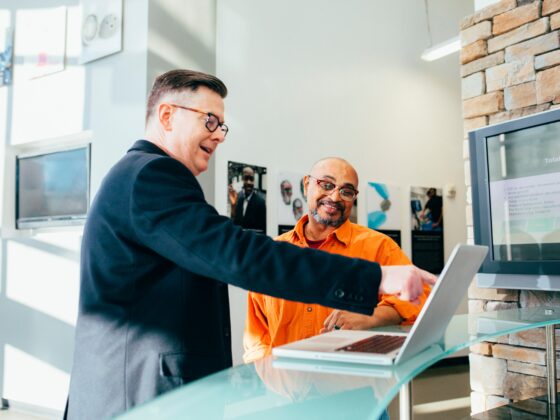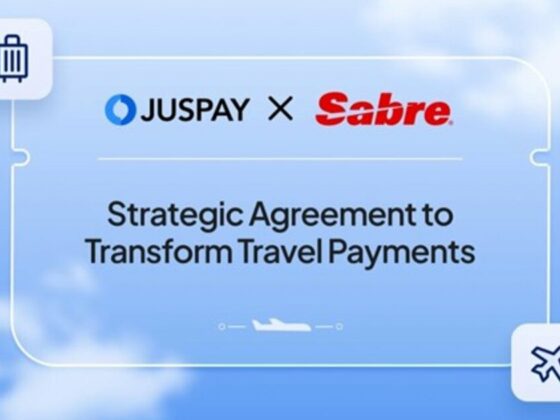The best ideas often feel obvious, but only after someone finally acts on them. This issue looks at the small shifts, asymmetric bets, and subtle reframes that quietly reset expectations. I hope you enjoy it.
Special thanks to Digital Sardine for sponsoring this edition of the newsletter:
Supercharge your travel business in Q2 with expert PPC strategies explicitly designed for the travel industry! With data-driven paid search campaigns, you can maximize bookings, enhance ROI, and stay ahead of the competition.
Gain valuable insights with a free Google Ads audit. Visit Digital Sardine to book your strategy consultation and claim your free audit today—there’s nothing to lose!
0. Most clicked in the previous newsletter
The most clicked link in the last issue was Mapping Travel Tech’s Technology Windows
Inspired by James Currier’s B2B framework, this was my take on how timing patterns apply in travel tech.
1. Learning to write
I’ve been reading On Writing Well by William Zinsser to get better at writing this newsletter. It’s a book about clarity, simplicity, and respecting the reader’s time. Here are a few principles I’m trying to keep front of mind. None of it is groundbreaking, but it’s helping me tighten my thinking and make the writing more useful. Maybe it’ll do the same for you.
-
Keep it simple. Don’t dress it up. Just say it.
✘ “It is my intention to…” → ✔ “I want to…” -
Be clear. If it’s hard to read, it’s probably hard to understand.
✘ “A disruptive end-to-end travel optimization platform…” → ✔ “A tool that helps people plan better trips.” -
Cut clutter. Most sentences can lose 30%.
✘ “At this particular point in time, we are experiencing precipitation.” → ✔ “It’s raining.” -
Use active verbs.
✘ “Revenue was increased…” → ✔ “We grew revenue.” -
Write with humanity. Communicate like a real person to real people, not hiding behind institutional language and jargon.
✘ “Notification: Payment processing failure has occurred. Resolution pending.” ✔ “We couldn’t process your payment. I’m looking into this for you now.” -
Enjoy it. If it feels like a chore, it’ll read like one. Enthusiasm is contagious.
✘ “This newsletter is an obligation I fulfill every two weeks.” → ✔ “I like writing this. It helps me think more clearly.”
2. The Asymmetric power of one thing
Greg Isenberg shared a strong reminder: when AI can instantly generate “balanced” products, your edge isn’t checking every box; it’s making a sharp, irrational-looking bet on one thing that matters. When its competitors were building sales teams, Hubspot wrote 750 educational content blog posts before hiring their first salesperson. Costco sells 1/20th of Walmart’s inventory. Five Guys makes your burger slow, by hand, in a category obsessed with speed. Each one sacrificed the “sensible” path to focus on what actually moved the needle.
In travel, the same question applies. What if you built a flight search that didn’t show the cheapest fare, just the one least likely to ruin your day? What if your entire value prop was: “We’ll deal with the disruption”?
Greg lays out a solid framework for founders to find their edge: question the “must-haves,” flip what everyone optimizes for, and turn constraints into strengths.
AI can do well-rounded. Founders win by going lopsided. Read +
(Thanks to Mario Gavira for flagging this and pointing to Kiwi.com’s Disruption Protection strategy as a live example, moving away from a lowest-price-only focus)
3. Asymmetric marketing too
Following on from Greg Isenberg’s point about going all-in on one sharp, irrational-looking bet, Andrew Chen from a16z wrote about why that thinking now applies to marketing, too. In his latest piece, Every marketing channel sucks right now, he walks through why every traditional growth channel kind of sucks right now: SEO is slow and risky, influencer traffic doesn’t convert, email lands in spam, and it’s nearly impossible to get viral factors >1.
His big idea is that the usual “balanced” marketing mix no longer works. These channels are mature, crowded, and expensive, and AI only widens the gap between generic execution and standout ideas. His takeaway is that distribution itself has to be asymmetric. You need to find weird, underpriced, or emotionally resonant ways to reach people. Something that doesn’t scale, but hits. A niche audience. A wedge no one else is thinking about.
And here’s where I move in with my shameless plug: if you’re a founder trying to reach smart people building in and around travel, this newsletter is one of those asymmetric bets. You can sponsor Travel Tech Essentialist and/or we can collaborate on a Deep Dive. Reach out if you want to chat.
4. Lean teams, remote hires, and the AI factor
Sharp drop in US software dev job postings since the 2022 peak. But it might not just reflect a slowdown; it could also be about how and where companies are hiring. AI is speeding up development, so teams don’t need to be as big. More companies are hiring globally, using contractors, or relying on smaller, remote teams. The shape and distribution of demand might be shifting. Just one possible interpretation, but it lines up with how AI and leaner approaches are reshaping early-stage teams.
5. Common-sense innovation
Roman Townsend flagged a smart move from easyJet: the airline now reserves overhead bin space for front-row passengers who pay premium prices. No more walking halfway down the cabin to find space for your bag, then waiting in the aisle while everyone deplanes. Feels like something that should’ve happened a long time ago. Another reminder that not all travel innovation needs tech.
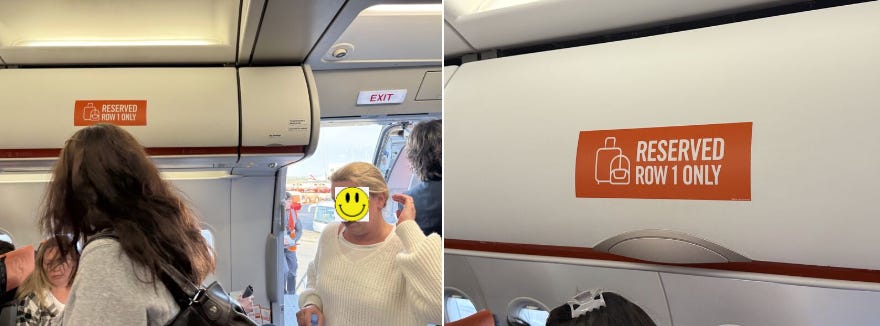
6. Change the story, change the experience
Rory Sutherland shared a moment from an easyJet flight into Gatwick. Passengers were told they’d need to take a bus because the gate was blocked…usually an annoying update. But the pilot framed it as: “The good news is the bus drops you right next to passport control, so you won’t have to walk far with your bags.” Same situation, different perception. No fancy tech, no expensive fix, just a well-timed line that made a bad experience feel almost helpful. Another example of how small, thoughtful communication can shift the customer experience.
(Yes, this is the second time easyJet shows up in this issue! 😮)
7. Wheels on suitcases came after the moon landing

It’s wild how many travel basics are actually pretty recent. Smoking on planes was legal until the late ’90s. Online check-in only took off in the 2000s. Boarding passes were still carbon paper well into the ’80s.
Obvious things often aren’t obvious until someone finally fixes them. What’s today’s version of suitcase wheels or no-smoking signs…things we’ll look back on and wonder how they took so long? Could serving alcohol in-flight be the next thing to go?
8. Reviews = Revenue (especially in Travel)
A new report from GetYourGuide analyzing 3.1 million verified reviews shows that in travel, reviews are more than just social proof; they’re a conversion engine. Some of the highlights:
-
Review volume has exploded since 2019, up 420% for experiences (versus 155% across industries)
-
Just 3 reviews can 3x your conversion rate. With 5 reviews, customers are almost 4x more likely to book than with none. After 30, the impact starts to level off.
-
Star ratings are what matter most to travelers, followed by # of reviews, recency, specific ratings, and authentic photos.
-
Travelers trust reviews from strangers nearly as much as friends’ advice. 91% of 18-34 year-olds say so.
-
Having just 15 reviews instead of 0 can push your product 4x higher in search rankings and increase bookings per view by 4.5x..
-
Raising your average rating from 3.2 to 4.2 lifts conversions by 39%.
9. Travel web traffic
Looking at the top 30 travel websites by monthly web traffic (using SimilarWeb and Statista), a few things stand out:
-
Booking.com is way out in front with 517M visits, more than 4x Tripadvisor (130M) and 5x Airbnb (105M).
-
Booking Holdings owns 4 of the top 30, and Tripadvisor owns 3. Consolidation still drives reach.
-
Airline sites are pulling serious traffic, several beat out major OTAs, which says a lot about direct booking behavior.
-
The US dominates with 21 of the top 30 sites
-
Europe barely shows up. Only Ryanair and Omio make the cut.
-
Local players matter. India, Japan and China all show up with strong domestic platforms.
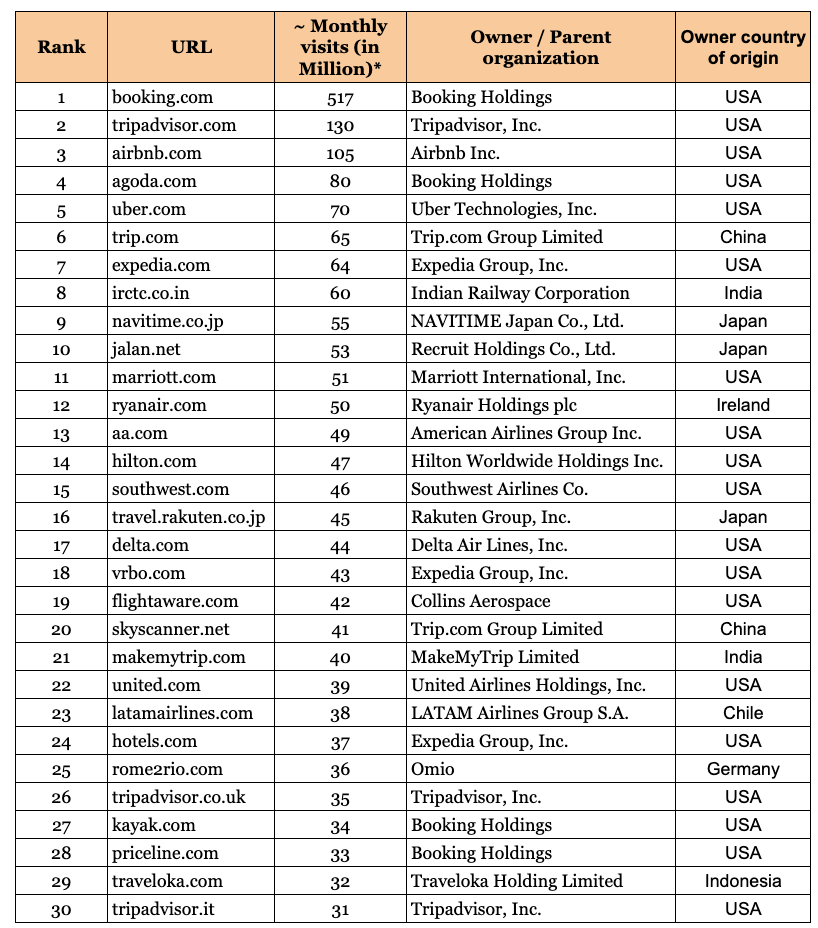
10. The world’s #1 hairline
Back in January, I wrote about how Turkey has become the global capital for hair transplants, capturing a significant slice of a growing $1.9B medical tourism market. In Q3 2024 alone, 1.1 million medical tourists visited, many drawn in by packages that bundle the procedure with hotel stays and concierge-level care.
Here’s a funny (and totally made-up) ad from the Ad Professor for Turkish Airlines, playing off the trend. 😂

PS. Poll results: Hotel non-negotiables
Last week’s poll asked: You get ONE perfect thing in your hotel stay. What’s your non-negotiable?
Here’s how you voted:
-
The bed – 39%
-
Room temperature – 28%
-
Total silence – 20%
-
The pillow – 9%
-
Total darkness – 4%
It’s pretty clear that comfort still wins, and room climate matters more than you might think. Thanks for voting!
Travel Tech Essentialist Job Board
→ Explore all 1,080 open travel tech roles on the Travel Tech Essentialist Job Board now.
-
Protect Group | Business Development Director | Remote; Dallas; Denver; Montreal; Vancouver
-
Fora | Market Research Manager | New York City | $120,000 – $150,000 / year + Equity
-
Expedia | Brand Expedia & Portfolio Ecommerce Merchandising Director | London; Austin; Washington DC; Seattle; Dallas | $197,000 – $315,500 / year
-
TravelPerk | Senior Brand Designer | Barcelona
💼 Employers: List your job openings here by completing this quick form
📩 For monthly updates on the latest roles, subscribe to the Travel Tech Jobs newsletter
Raising a round?
If you are a startup looking to raise a round (from pre-seed to Series D), I can help (for free). Travel Investor Network is a private platform where I recommend innovative travel startups to investors and innovators. If you’re interested, please start by completing this form.
If you like Travel Tech Essentialist, please consider sharing it with your friends or colleagues. If you’re not yet subscribed, join us here:
And, as always, thanks for trusting me with your inbox.
Mauricio Prieto

